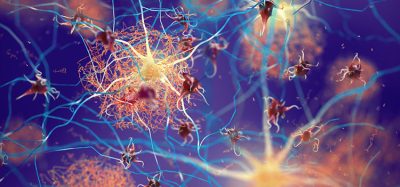Gene discovery indicates motor neurone diseases caused by abnormal lipid processing in cells
Posted: 21 June 2022 | Ria Kakkad (Drug Target Review) | No comments yet
A new genetic discovery adds weight to a theory that motor neurone diseases are caused by abnormal lipid processing pathways inside brain cells.


A new genetic discovery could support the theory that motor neurone degenerative diseases are caused by abnormal lipid processing pathways inside brain cells. This ground-breaking discovery, which was recently published in Brain, could help pave the way to new diagnostic approaches and treatments for this group of conditions.
Motor neurone degenerative diseases (MNDs) are a large family of neurological disorders. Currently, there are no treatments available to prevent onset or progression of the condition. MNDs are caused by changes in one of numerous different genes. Despite the number of genes known to cause MNDs, many patients remain without a much-needed genetic diagnosis.
The researchers from the University of Exeter, UK, have identified a new gene, TMEM63C, which causes a degenerative disease that affects the upper motor neurone cells in the nervous system. Recently published in Brain, their latest discovery is important as the protein encoded by TMEM63C is in the region of the cell where the lipid processing pathways they identified operate. This further supports the hypothesis that MNDs are caused by abnormal processing of lipids including cholesterol.
MNDs affect the nerve cells that control voluntary muscle activity such as walking, speaking and swallowing. There are many different forms of MNDs which have different clinical features and severity. As the condition progresses, the motor neurone cells become damaged and may eventually die. This leads to the muscles, which rely on those nerve messages, gradually weakening and wasting away.
If confirmed, the theory could lead to scientists to use patient samples to predict the course and severity of the condition in an individual, and to monitor the effect of potential new drugs developed to treat these disorders.
In the latest research, the team used cutting-edge genetic sequencing techniques to investigate the genome of three families with individuals affected by hereditary spastic paraplegia – a large group of MNDs in which the motor neurons in the upper part of the spinal cord miscommunicate with muscle fibres, leading to symptoms including muscle stiffness, weakness and wasting. These investigations showed that changes in the TMEM63C gene were the cause of the disease. In collaboration with Medical Research Council Mitochondrial Biology Unit at the University of Cambridge, UK the team also undertook studies to learn more about the functional relevance of the TMEM63C protein inside the cell.
Using state-of-the-art microscopy methods, the Cambridge team’s work showed that a subset of TMEM63C is localised at the interface between two critical cellular organelles, the endoplasmic reticulum and the mitochondria, a region of the cell required for lipid metabolism homeostasis and proposed by the University of Exeter team to be important for the development of MNDs. In addition to this specific localisation, the researchers uncovered that TMEM63C controls the morphology of both the endoplasmic reticulum and mitochondria, which may reflect its role in the regulation of the functions of these organelles, including lipid metabolism homeostasis.
“Understanding precisely how lipid processing is altered in motor neurone degenerative diseases is essential to be able to develop more effective diagnostic tools and treatments for a large group of diseases that have a huge impact on people’s lives. Finding this gene is another important step towards these important goals,” concluded Dr Emma Baple.
Related topics
Disease Research, Gene Testing, Lipidomics, Lipids, Microscopy
Related conditions
Motor neurone degenerative diseases (MNDs)
Related organisations
University of Exeter
Related people
Dr Emma Baple







